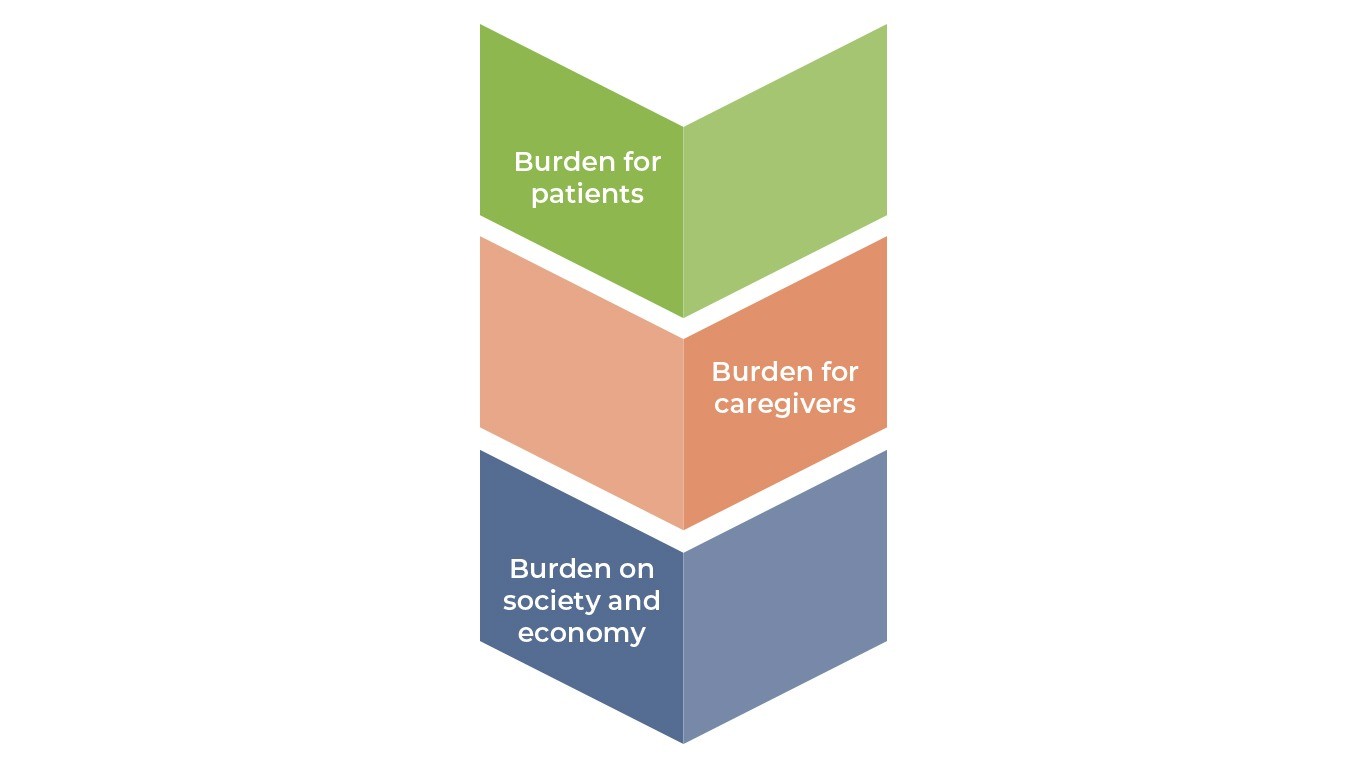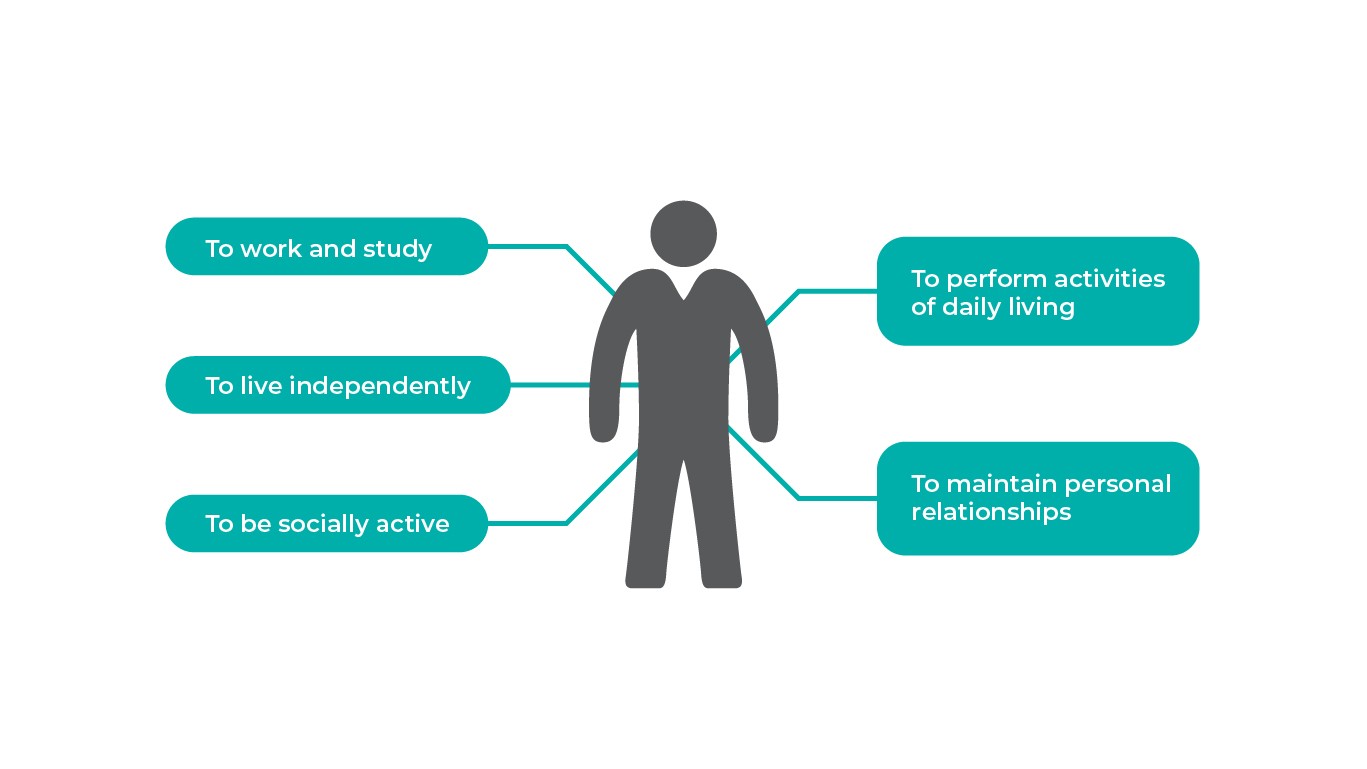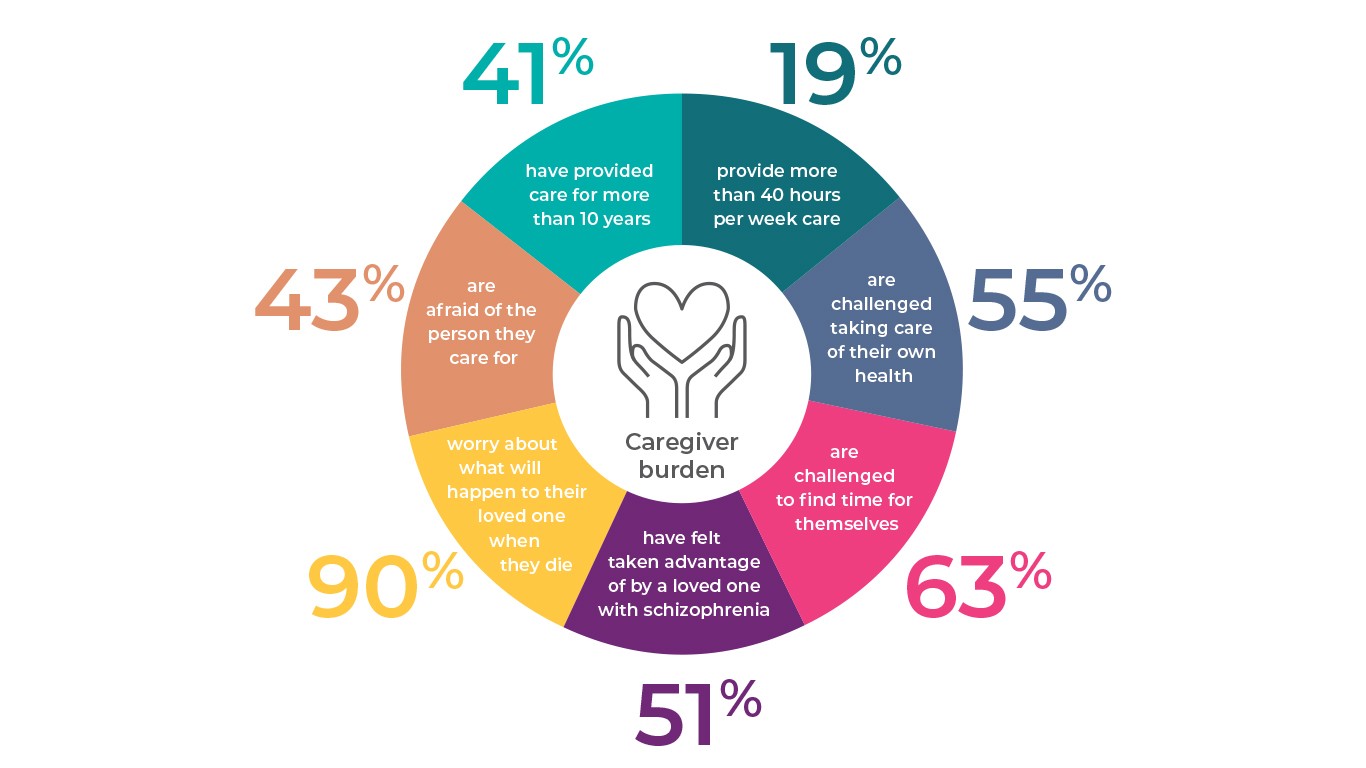Societal and Economic Burdens
Despite being a disorder with relatively low prevalence, schizophrenia is ranked among the top 25 leading causes of disability. Even with best-practice treatment, outcomes are often suboptimal given the complexity of the disorder and its wide-ranging consequences.

Although there are considerable differences in the distribution of costs and service utilization for schizophrenia around the world, the global economic burden of schizophrenia is enormous. The main components of cost are associated with direct healthcare costs (eg, inpatient costs, outpatient costs, emergency department visits, prescription drugs), direct non-healthcare costs (eg, law enforcement, homeless shelters), and indirect costs (eg, unemployment, lost productivity, premature mortality, caregiver time). Recent examples of analyses conducted to estimate costs in schizophrenia include a systematic review of studies from 24 countries in 4 regions (Europe, US, Asia-Pacific, Africa) where the annual costs ranged from US $94 million to US $102 billion. In an additional US study, the estimated cost of schizophrenia was $155.7 billion for 2013, with the largest contributors to excess costs associated with unemployment (38%), lost productivity (34%), and direct health care costs (24%). Indirect healthcare costs were the main drivers of excess cost in both of these analyses.
Acknowledging the Human Burden
In patients with schizophrenia, decline in mental function and social relationships over time can lead to social isolation, stigma, worse functional and cognitive impairment, reduced quality of life, and poor physical health, which creates burdens not only for individuals with schizophrenia, but for their caregivers and families alike.
Patients
Many factors contribute to premature mortality in patients with schizophrenia. The average life expectancy of people with schizophrenia is reduced by 10-25 years compared with the general population. Further, a retrospective US database analysis found that adults with schizophrenia were more than 3.5 times as likely to die during follow-up as adults in the general population. The main factors associated with excess premature mortality in patients with schizophrenia are an unhealthy lifestyle, poor physical health, a 12-times increased risk of suicide, and side effects of antipsychotic drugs. People with schizophrenia are not only more likely than others to have cardiovascular disease risk factors, including excess weight, smoking, high blood pressure, and metabolic syndrome, but they are less likely to receive preventative care. Additionally, several second-generation antipsychotics are more likely to cause weight gain and subsequent metabolic syndrome, which is associated with a 2- to 3-fold increase in cardiovascular mortality and a 2-fold increase in all-cause mortality. Given that many causes of excess early mortality in schizophrenia are associated with preventable risk factors, key treatment goals for patients with schizophrenia should include good overall physical health, improved access to healthcare, and better screening practices.
Schizophrenia is a highly heterogeneous disorder, with patient outcomes that can range from complete recovery to the need for comprehensive care. Unfortunately, complete recovery in schizophrenia is not the usual outcome and patients often experience impairments in social relationships, sustaining employment, and independent living. Even after patients achieve remission from psychotic symptoms, deficits often persist because functional outcomes largely depend on the presence and severity of cognitive and negative symptoms, which are challenging to treat. As may be expected, patients with schizophrenia have lower quality of life than the general population, with worse decrements associated with longer duration of illness, negative or depressive symptoms, medication side effects, and lack of family support. Among patients with schizophrenia, better quality of life is reported in younger people, women, married people, and individuals with a lower level of education. Treatment with antipsychotics that have a good tolerability profile and the addition of psychosocial treatments can also improve quality of life.
Negative Symptoms Add to the Burden of Schizophrenia
Negative symptoms are widely recognized as significant predictors of poor outcomes in schizophrenia. They carry a high burden of illness due to their pervasiveness, persistence, link to poor functional outcomes, increased costs due to higher healthcare utilization, and adverse influence on quality of life.

Within the negative symptom domain, motivational deficits appear to be one of the most important predictors of functional impairment, with evidence further suggesting a potential interaction between negative symptoms and cognitive symptoms in regard to impaired function. The limited number of effective treatment options for negative symptoms is a serious unmet medical need that increases the burden of illness in schizophrenia.
Caregivers
Patients with schizophrenia often require extensive help with personal care, medication management, and everyday activities. Family members make up the bulk of the caregiver population for people living with schizophrenia. In a survey, 68% of caregivers were identified as parents, 12% were siblings, 7% were spouses or significant others, and 7% were the children or grandchildren of the person under their care. Caregivers may be negatively affected by work overload at home, sleep disturbance, financial problems, less spare time, stigma, and social isolation. Studies have shown that many caregivers experience significant cognitive, psychological (eg, anxiety, depression) social (eg, stigmatization, isolation), and financial burdens. Caregivers’ work productivity and careers suffer when they have to leave their employment or reduce their hours to care for someone.

Source: https://schizophrenialife.se/the-burden-of-schizophrenia/